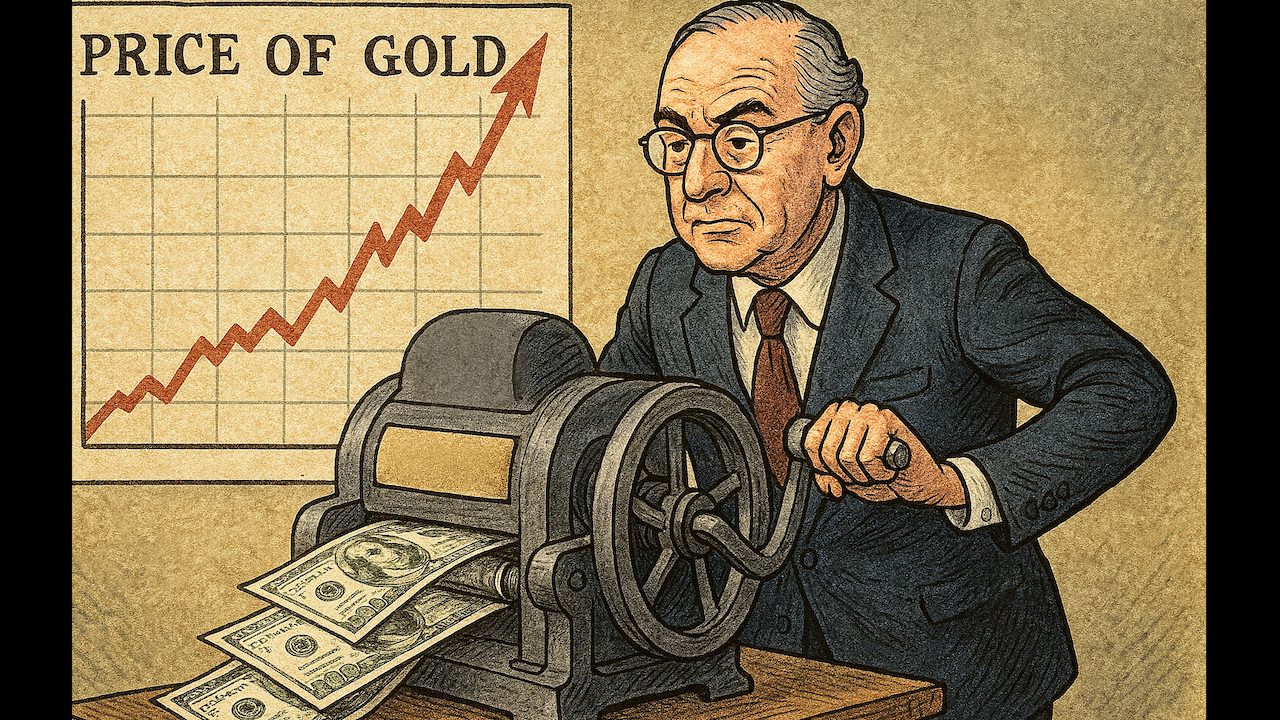(Mike Maharrey, Money Metals News Service) Since hitting a record high of $3,500 an ounce in April, gold has consolidated and generally traded sideways over the last several months. Some have speculated that the rally might be over, but economist Thorsten Polleit believes the rally is far from over.
In a recent interview, the Honorary Professor of Economics at the University of Bayreuth and publisher of the BOOM & BUST REPORT said gold and silver are setting up for “important structural breakouts,” and that the price could double in the next five to 10 years.
What is driving gold higher?
Polleit said people are losing faith in the paper money system with its massive levels of debt and relentless inflation.
“There is a desperate attempt to secure safe haven assets. People are becoming skeptical of the purchasing power of all fiat currencies, and we can see this in the global gold market.”
While there is some perception that the gold market has cooled over the last few months, TheGoldAdvisor.com editor Jeff Clark told Money Metals News that every bull market includes corrections, and this one has been historically shallow.
“There are always ebbs and flows. There are always corrections – any asset, not just gold. What’s interesting is that the correction in gold since the high, we haven’t even had a 6 percent correction, and that’s not normal. The normal correction, at least from the bull market in 2001 to 2011. The average correction was 10.1 percent. … So, this correction in gold has been more in time than it has been in price.”
Polleit noted that gold is not only holding ground around $3,300 an ounce, but it is also trading at or near record highs in the Japanese yen, the British pound, the euro, the Canadian dollar, and many other fiat currencies. This represents the weakness of the fiat money system.
Fiat money is defined as a government-issued currency not backed by a physical commodity such as gold or silver.
So, what is fiat backed by?
“The full faith and credit” of the issuing government.
In other words – nothing.
The problem with fiat is that the government can expand the money supply with virtually no restraint. This supports and incentivizes government borrowing and spending, driving inflation.
The U.S. national debt recently eclipsed $37 trillion, but Polleit pointed out that Uncle Sam isn’t the only one with a debt problem.
“Global debt is rising everywhere, and this is driving inflation. It’s not just in the U.S. Government debt is rising in Canada, it’s rising in the UK, and it’s rising in Europe.”
This puts central banks in a Catch-22. They need to keep rates artificially low to keep government borrowing costs low. On the other side of the coin, loose monetary policy drives inflation.
Polleit said the debt environment makes it impossible for central banks to raise rates because it increases the government’s debt-servicing cost, putting a drag on economic growth. He said he thinks central banks will not only aggressively cut rates this year, but they will also be forced to return to “financial repression and potentially yield curve controls.”
In other words, the central banks will partner up with governments to inflate away some of that debt. At the same time, they will inflate away even more of your purchasing power.
Polleit said that if interest rates fail to bring down yields on the long end of the curve, the Fed will have to return to quantitative easing (QE).
“ If that [rate cuts] doesn’t work, if you don’t get the long-term interest rate down, I think it’s very plausible to assume that central banks will start purchasing once again. Once yields come down, you will see a further appreciation of the gold price. There is so much potential and momentum in gold that I expect we will see higher prices before the end of the year.”
It’s notable that when the Fed cut rates at the end of 2023, yields on the long end of the curve went up – not down, and the weakness in the Treasury market has continued ever since.
In a 2023 interview, analyst Jim Grant said he believes we are in the early stages of a secular bear market in bonds, meaning yields will likely remain elevated despite the best efforts of central banks.
“I speculate that we are embarked on a long cycle of rising rates. And I say that first of all, for reasons of pattern recognition, there’s no theory behind it. But I observe that in 2020 and ‘21, some unimaginably large number of debt securities were priced to yield less than nothing. Bloomberg keeps this particular figure. And I bet still, perhaps you could check me on this, I bet still, there’s like a hundred billion of bonds priced to yield less than nothing worldwide. But there were $18 trillion, I think, at the peak.
“[It was] the most extraordinary expression of unqualified bullishness on an asset class because it had the name of ‘bonds’ which had been falling in yield, rising in price. So no, it would not surprise me at all if we were embarked on something resembling a generation-length bear market in bonds, meaning rising yields and falling prices that would fit the form.”
When you boil it all down, we could be entering into a prolonged period of stagflation with weak economic growth and hot inflation. This is why Polleit and many others are bullish on gold and silver.
Mike Maharrey is a journalist and market analyst for Money Metals with over a decade of experience in precious metals. He holds a BS in accounting from the University of Kentucky and a BA in journalism from the University of South Florida.

